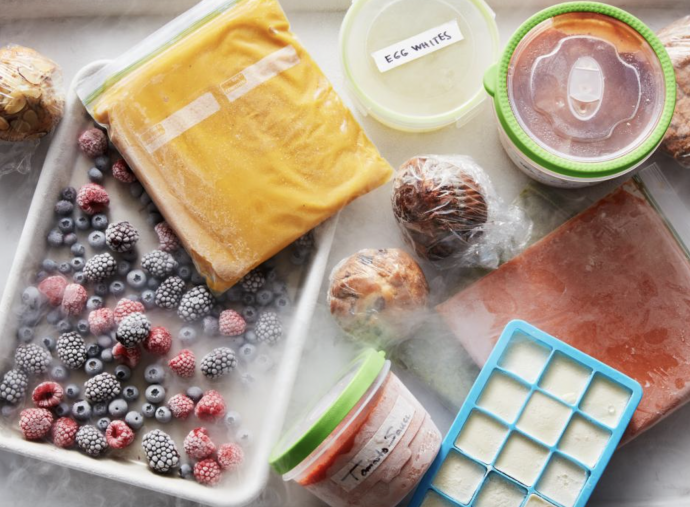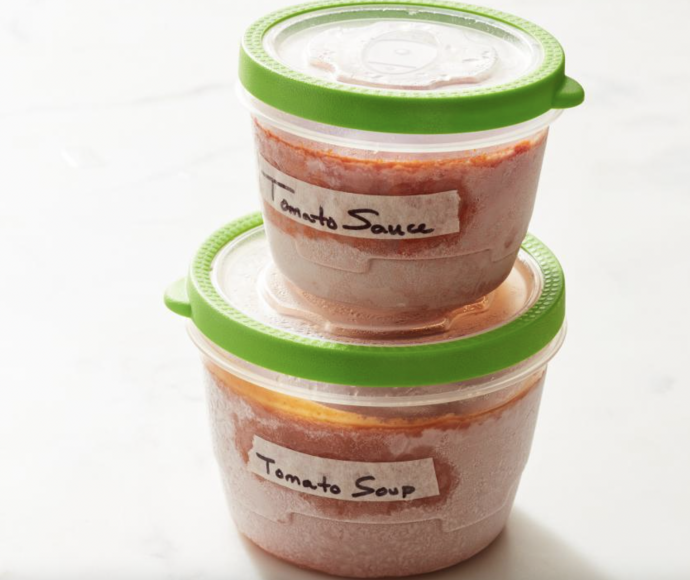Tips on how to freeze everything: Part 1

Save time and money with these proven food-freezing techniques.
Not only will this help you avoid food waste, but it'll also improve your bottom line: look in the freezer before you write a grocery list. A well-stocked freezer is the ticket for quick weeknight meals and impromptu invitations. Here are some tips for how cooks keep their chicken cutlets and casseroles frost-free and organized.
1. It all starts with the right container
Wrap food tightly in plastic wrap, wax paper or foil - twice - before placing it in a resealable freezer bag. Squeeze out as much air as you can; if you have a vacuum maker, all the better. Storing food in a casserole dish or jar? Make sure the container is freezer-safe. Place a piece of plastic wrap directly on the surface of casseroles, soups and other foods that might be exposed to air to protect them from freezer burn. Leave some space for foods in jars and boxes, as liquids expand during freezing. Last but not least: Label everything with the date and contents. Spaghetti sauce and tomato soup often look confusingly similar after a few months on ice.
2. And remember to defrost
How you defrost something depends on the urgency. Here are Food Network Kitchen's preferred methods: thaw food in the refrigerator for a day or two, or place it in a resealable bag in a bowl of cold water, change the water frequently, and never let food sit for more than two hours at a time. The microwave is a last resort - use it only for foods where cookedness isn't important; this method isn't suitable for steaks or chicken.
3. Chops, steaks, cutlets and sausages
If you want to freeze the meat or poultry for more than a few days, remove it from the package, wrap it twice in plastic wrap, wax paper, or foil, and place it in a freezer bag, squeezing out as much air as possible. (Or use a vacuum sealer if you have one.) Vacuum-packed cold cuts can be placed directly in the freezer. Sliced portions should be wrapped tightly in plastic, wax paper or foil and placed in freezer bags.
4. Fish and shellfish
For whole fish, steaks, and fillets, use the same method as for meat: remove the fish from the package, wrap it twice in plastic wrap, wax paper, or foil, and then squeeze out the air or use a vacuum sealer. Shrimp can be frozen raw or cooked: Be sure to pat them dry before placing them in a freezer bag. Oysters, scallops, mussels and clams should be removed from their shells and as much air as possible removed before freezing in freezer bags.
5. Dairy
Transfer to freezer-safe containers, leaving some room for expansion. Ice cube containers are also handy: freeze in cubes, then transfer to a freezer bag to portion accurately. Semi-fat and cream don't keep as well in the freezer, so keep them in the refrigerator.
6. Cheese
Wrap blocks of cheese twice in plastic wrap, wax paper, or foil, then place in a freezer bag. If you don't want to use up the whole block at once, cut the cheese into smaller portions that you can take out as you go. And don't forget the rind! Keep a freezer bag for leftover Parmesan to use in sauces and soups. But leave out cottage cheese and soft cheeses like ricotta and mozzarella - they don't freeze well.
7. Eggs
Whole eggs won't survive in the freezer, but the whites freeze surprisingly well. Be sure to leave some room in the container.




I have frozen several types of cheese. I usually buy large bags of grated cheese from Sam's or Walmart and with only the two of us I freeze it to keep it from molding. I've had no problem freezing mozzarella cheese. I put my cheese in a Ziplock freezer bag.